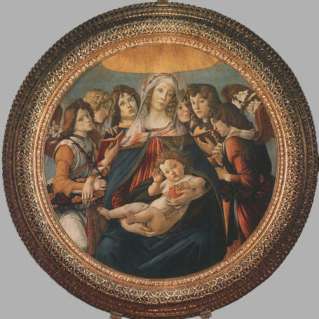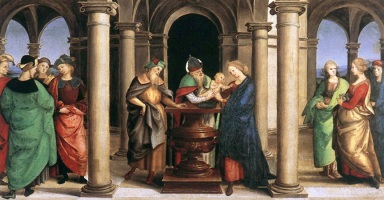At last count, I had 24 religious icons. Some are Romantic era pictures, and some are replicas from the Byzantine period. Most have come from different countries, where I searched them out among coffee bars and trinket shops. It gives my heart a thrill to find one, purchase it, and carefully pack it up to carry home where it is then carefully nestled along with the other icons, awaiting their retrieval for living room display (in lieu of a tree) in the Advent Season.
Here are a few Madonna and Child icons/pictures in our cadre:
Do you have a collection of objects that you enjoy viewing and displaying? If so, I would really like for you to comment. And show me what you collect.
linked here:
The Madonna and Child has been a common topic of art throughout the centuries but they were most influential in the Middle Ages and the Renaissance time periods. Paintings of the Madonna and Child have been dated back to before the sixth century and have continued to appear throughout the ages even to the present day. Despite how old and how popular of a subject the Madonna and Child is, artists manage to show a great deal of variety and originality over the years.
The history of the Madonna and Child starts in the Byzantine era. In this era paintings were not meant to look realistic, but rather were supposed to remind the viewer of a story or theological concept, in this case usually the concept that Jesus was both fully God and fully human. The years progressed and these paintings became more and more realistic as the Renaissance era was ushered in. During this time period artists strove to paint more accurate representations of their subjects. Even during this time, however there was still a use of iconology. Though all of these paintings have basically the same content, with the addition of various saints and angels, the theology that we can see in each painting differs greatly. Artists may have started may have started paying more attention to lifelike detail as they progressed from the Byzantine era to the Renaissance, but Madonna and Child paintings have always relied heavily on symbolism and iconology.
The Byzantine Madonna and Child was often times a simple representation. These paintings did not have accurate anatomical features. This was not because artists were unable to paint the human form accurately, they had been doing that for centuries before, they painted in this style because they were not made for the purpose of drawing attention to themselves. Instead they were designed to direct attention to the subject matter. The Byzantine Madonna and Child (at right)
 is an example of a typical work from the 13th century. Notice how there is little sense of depth and how Jesus is almost floating in Mary’s arm. Also notice how the baby Jesus is here depicted as having the features and proportions of an adult, but the overall body size of a child. These are features common of Byzantine art. The artist of this painting is trying to make the viewer think about and understand the concept that Christ was God and man at the same time. By using symbols the artist of this painting was able to convey more without making his painting more complicated. Some symbols present in this painting that give it more meaning than is seen on the surface are the color of Mary’s rob, the style in which the child Jesus is portrayed, and even the way He holds his right hand.
is an example of a typical work from the 13th century. Notice how there is little sense of depth and how Jesus is almost floating in Mary’s arm. Also notice how the baby Jesus is here depicted as having the features and proportions of an adult, but the overall body size of a child. These are features common of Byzantine art. The artist of this painting is trying to make the viewer think about and understand the concept that Christ was God and man at the same time. By using symbols the artist of this painting was able to convey more without making his painting more complicated. Some symbols present in this painting that give it more meaning than is seen on the surface are the color of Mary’s rob, the style in which the child Jesus is portrayed, and even the way He holds his right hand.The artist here depicts Mary clad in her trademark blue robe. Mary is often portrayed wearing blue because blue represents purity, the virgin birth, and was often a color of royalty. This shows us that the artist believes in the virgin birth of Jesus and possibly that Mary is due honor since she is the mother of Christ. The infant Jesus is depicted with just as much or more care as Mary. The artist depicts Jesus as having the proportions of a Man in the size of an infant. Portraying Jesus in this manner depicts that he is aware of his divinity and still He chooses to remain as an infant. To further this point the artist shows Jesus’ right hand raised in the sign of blessing as if he is blessing his own mother. This is obviously not something a normal infant would do and is meant to show that Jesus is more than just an infant. These and other similar symbols are used throughout the ages.
The Byzantine era was ushered to a close with Giotto’s Madonna in Majesty, a type of Madonna and Child. In this painting Giotto began to rediscover the beauty of realistic art. For the first time in hundreds of years the human body was painted so that it looked like it actually takes up space and has physical mass in the world it is painted in. Renaissance artists also had a tendency to use much brighter and more vivid colors when painting. The main goal of Renaissance artists was no different from the goal of Byzantine artists, the difference was how their method of achieving that goal. The Byzantine artists thought that realism and detail was distracting and unnecessary, where the Renaissance artists believed that there was beauty in realism and beauty, since it is an attribute of God, is a good thing that should be striven for. Renaissance artists believed that beauty derived from realism was not a distraction but rather an aid in contemplating Godly things.
Botticelli and Rafael are two examples of famous of Renaissance artists who believed in making things look realistically beautiful. When looking at their paintings, however, the viewer can see two prominent styles of depicting Jesus. The first is similar to the Byzantine portrayal because it emphasizes Jesus’ divinity, the other emphasizes his humanity. In Botticelli’s Madonna of the Pomegranate (at left)
 a realism of color and life that did not exist in the Byzantine era, and yet it seems that the focus is same. The look of paintings have changed but they still bears many similarities with the Byzantine art. Jesus is shown as a baby rather than the miniature adult in the Byzantine art, but he looks out at the viewer with knowing eyes that make him seem older somehow. Another similarity with the Byzantine art is that Jesus is again raising his hand in blessing, but this time it is towards the viewer instead of Mary, who is once again shown in blue. Though this painting and the Byzantine painting have much in common there are some symbols that occur in Botticelli’s painting that do not occur in the Byzantine painting. These icons are not new from Botticelli, but they bring more meaning to the painting. The Flower which the angel in the bottom left is carrying is the white lily. The white petals of this flower represent Mary’s purity and the gold anthers represent the radiance of her sole. The pomegranate that Mary and Jesus hold, for which the painting is named, represents eternal life and the unity of the Christian community.
a realism of color and life that did not exist in the Byzantine era, and yet it seems that the focus is same. The look of paintings have changed but they still bears many similarities with the Byzantine art. Jesus is shown as a baby rather than the miniature adult in the Byzantine art, but he looks out at the viewer with knowing eyes that make him seem older somehow. Another similarity with the Byzantine art is that Jesus is again raising his hand in blessing, but this time it is towards the viewer instead of Mary, who is once again shown in blue. Though this painting and the Byzantine painting have much in common there are some symbols that occur in Botticelli’s painting that do not occur in the Byzantine painting. These icons are not new from Botticelli, but they bring more meaning to the painting. The Flower which the angel in the bottom left is carrying is the white lily. The white petals of this flower represent Mary’s purity and the gold anthers represent the radiance of her sole. The pomegranate that Mary and Jesus hold, for which the painting is named, represents eternal life and the unity of the Christian community.Rafael’s painting The Presentation of Christ at the Temple (below at right) bears a prominent and dramatic difference in focus from both the Byzantine Madonna and Child and Botticelli’s Madonna and Child. Instead of being focused on the divinity of Jesus, Rafael focuses on the human aspect of Jesus. In this painting Rafael shows Jesus as a normal baby going to the temple to be dedicated. This was normal for the first born baby boy of a Jewish family. Jesus is not depicted looking out toward the viewer with knowing eyes or looking at Mary to bless her in this painting, instead he is shown clinging to his mother as she hands him over to the high priest as any normal baby would. This
 painting does not use as much symbolism outside of the rich colors that might normally accompany royalty and Mary’s typically blue tunic. This is because Rafael is approaching a much simpler topic than some of the other paintings. In this painting Rafael does not deny Jesus’ divinity, but rather he chooses to emphasis Jesus’ simple human nature.
painting does not use as much symbolism outside of the rich colors that might normally accompany royalty and Mary’s typically blue tunic. This is because Rafael is approaching a much simpler topic than some of the other paintings. In this painting Rafael does not deny Jesus’ divinity, but rather he chooses to emphasis Jesus’ simple human nature.These three paintings by no means give a complete context or history to the subject of Madonna and Child artwork, but they do give a good overview of the history of the subject through the Byzantine and Renaissance ages. After learning this history viewers can better understand the Madonna and Child paintings they see today and possibly what the artist had in mind when he was designing the artwork.
Bibliography
“The Meaning of Sacred Symbols in Byzantine, Gothic and Renaissance Painting.” The History of Art and The Curious Lives of Famous Painters. Web. 13 Apr. 2010. <http://www.historyofpainters.com/symbol.htm>.
“Oddi Altarpiece.” Musei Vaticani – Sito Ufficiale. Web. 12 Apr. 2010. <http://mv.vatican.va/3_EN/pages/x-Schede/PINs/PINs_Sala08_02_03_039.html>.
“The Portrayal of the Madonna and Child Throughout History – Fabrizio Mancinelli.” Online Magazine: The World & I Online Magazine. Web. 13 Apr. 2010. <http://www.worldandi.com/specialreport/1986/december/Sa10287.htm>.






What interesting meanings. I don't collect anything although many of our tree's ornaments are from my childhood/mum's former tree.
ReplyDeleteoh love the collection you posted...beautiful
ReplyDelete(:)
Wow! Thank you for all the information. I'm not a collector, at least not a long-term collector. My toadstools are experiencing major shrinkage due to rambunctious grands and my gnomes suffer the same fate. I like to switch things up so it's okay. I hope you are enjoying the last few days before Christmas, Nancy.
ReplyDeleteBeautiful! I have a collection of collections:) AND I love them all! My biggest collection is my nutcrackers which were all gifted from my Sister! Have a blessed Christmas week dear Nancy, BIG HUGS!
ReplyDeleteI love your Madonna and child collection Nancy! I do have quite a few holy cards that I received in the late 1950's and early 1960's from the nuns at our church. As we learned particular prayers, we were rewarded the holy pictures, and got to pick out the ones we wanted. I have a lot of the Madonna and Jesus cards.
ReplyDeleteI try not to collect things so much now, as we don't have room to store these precious items. But I have a habit of collecting coffee cups! This was so pretty Nancy. Merry Christmas to you and your family! ♥
Oh that was so fascinating, Nancy. I love art history and I learned so much here. What a great collection. One of my daughters collects cards of the Annunciation, which is her birthday. I collect yarn and fabric - dont think that counts though xx
ReplyDeleteWow!!! You have so much knowledge!!! We saw kits of amazing works inFlorence last year! X
ReplyDelete